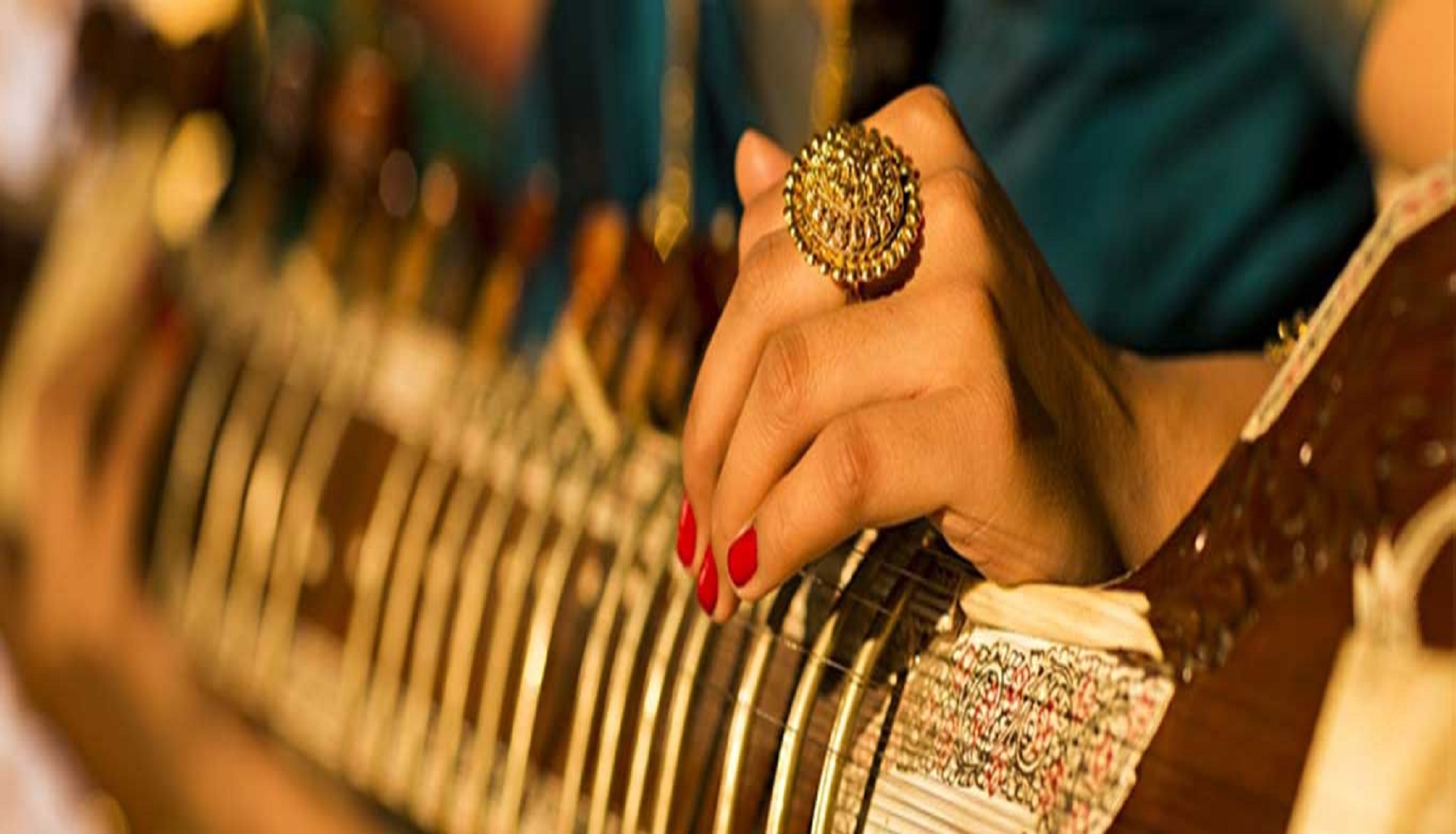

A dot over the note indicates the higher octave and a dot below the note indicates the lower octave. Normally the notes represent the middle octave. The notation is written using the the solfa symbols 'sa ri ga ma pa da ni' (corresponding to 'doh re me fa so la te'). In the sample below there are 3 rhythmic cycles in one line. When more than one rhythmic cycle is shown on one line double vertical lines are drawn to separate them. Laghu - a vertical line (or digit 1) followed by the number of units indicated by the jaathi ex. The symbols for the three Angams of the thaalam are: If it is charhurasra jathi thriputa thaalam it will have a laghu of 4 units, and 2 druthams of 2 units each totaling eight units in a cycle. Thus Thriputa thaalam has a laghu followed by 2 druthams. The order and number of the components (angams) of the thaalam are fixed by the thaalam name. The action for Laghu is a clap followed by counts (number of counts is one less than the total jaathi value so that clap and counts together account for the number of units of the jaathi). The possible units for Laghu are 3 (thisra), 4 (chathurasra), 5 (khanda), 7 (misra) and 9 (sankeerna). The Laghu has varying number of units indicated by the 'Jaathi' or class of the thaalam. The Anudhrutham is always a single unit and the action is a clap (or beat). The Dhrutham is always 2 units of time and in singing the action (kriya) associated with it is a clap (or beat) and a wave (turning up the palm). The commonly used thaalams have three 'angams' - Laghu, Dhrutham and Anudhrutham. To establish the rhythmic frame work ('Thaalam'), vertical lines are drawn, to separate the 'angams' (components) of a rhythmic cycle. The notation is written on one line and the lyric is written on the line below with words of lyric aligned to their corresponding notes. Samples of notation in Tamil and English are given below. Generally the notation is used to learn a composition rather than play it by sight and some of the practices in writing notation may be attributed to this.

Hence the notation does not prescribe the absolute pitches in which the composition is to be sung. The artiste has the liberty to choose any pitch as the tonic and the note sa will then refer to that pitch. In carnatic music sa (shadjam) is the tonic. (If anyone wants to reproduce the contents of this page, in full or in part, in any website or other places the source of the document with the name of the author M.Subramanian should be mentioned.)Ĭarnatic music notation is written using the solfa 'sa ri ga ma pa da ni' in textual form unlike the staff notation which is graphic.


 0 kommentar(er)
0 kommentar(er)
